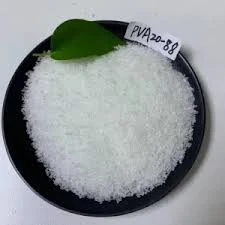HPMC for Cement A Comprehensive Overview
Hydroxypropyl Methylcellulose (HPMC) is a cellulose ether derived from natural cellulose, which has gained immense popularity in various construction applications, particularly in the formulation of cementitious materials. This versatile compound plays a critical role as an additive in cement, providing benefits that enhance the performance and workability of construction mixtures. As the construction industry continuously seeks to improve material properties and application processes, understanding the role of HPMC in cement is essential.
The Role of HPMC in Cementitious Products
Cement, by its nature, can sometimes be challenging to work with due to its quick setting characteristics and the necessity for fluidity and adhesion in various applications. HPMC addresses these issues effectively. As a water-soluble polymer, HPMC enhances the viscosity of cement mixes, improving their workability. This allows for easier application, particularly in complicated areas that require precise placement of cementitious materials.
Furthermore, HPMC acts as a binder, contributing to the mechanical strength and durability of the finished product. By retaining water within the mix, it ensures that the cement particles are adequately hydrated, promoting better curing and ultimately leading to enhanced strength properties. This is particularly beneficial in projects where prolonged workability is required, such as in large-scale construction sites or during adverse weather conditions.
Key Benefits of HPMC in Cement Applications
1. Improved Workability One of the primary advantages of using HPMC in cement formulations is its ability to improve workability. With enhanced flow characteristics, the cement mixture can be more easily manipulated and placed, reducing labor effort and time.
2. Water Retention HPMC is well-known for its excellent water-retaining properties. This ensures that the mix maintains the necessary moisture levels for optimal curing, resulting in a stronger final product. Adequate water retention prevents premature drying, significantly reducing the risk of cracks and other forms of damage.
hpmc for cement

3. Increased Adhesion The adhesive properties of HPMC help in enhancing the bond between cement and various substrates, which is vital for applications such as tile setting, plastering, and rendering. A better adhesive bond not only improves the durability of the construction but also contributes to its overall aesthetic appeal.
4. Enhanced Surface Finishing Cementitious products incorporating HPMC can achieve a smoother surface finish. This not only elevates the visual quality of the project but also minimizes the need for additional finishing steps, streamlining the construction process.
5. Sustainability Aspect The construction industry is moving towards sustainable practices, and HPMC aligns with this trend. As a cellulose-based derivative, HPMC can contribute to more eco-friendly formulations, reducing the environmental impact of construction materials.
Considerations and Applications
While HPMC offers numerous advantages, it is essential for manufacturers and builders to consider the specific requirements of each project. Different grades of HPMC are available, each tailored to specific applications, such as tiling, plaster, or masonry. The selection of the appropriate HPMC grade can significantly influence the final performance of the cement product.
In terms of applications, HPMC is widely used in tile adhesives, plasters, waterproofing compounds, grouts, and even in self-leveling flooring systems. As the construction industry continues to evolve, the demand for high-performance materials that can withstand various environmental challenges likewise increases. Using HPMC in cement mixtures meets these demands effectively.
Conclusion
Hydroxypropyl Methylcellulose (HPMC) plays a pivotal role in enhancing the performance of cementitious materials. Its ability to improve workability, optimize water retention, and enhance adhesion makes it an invaluable additive in modern construction practices. As the industry shifts towards sustainable solutions, HPMC stands as a key component that not only boosts material quality but also contributes to more environmentally friendly building processes. By harnessing the benefits of HPMC, construction professionals can ensure superior quality in their projects, paving the way for more robust and durable structures.
-
The Application and Significance of Construction RdpNewsMay.19,2025
-
Industrial Grade HpmcNewsMay.19,2025
-
Building Coating Adhesive Building Coating Adhesive HpmcNewsMay.19,2025
-
Application Of Hpmc For Detergent For Detergent In DetergentsNewsMay.19,2025
-
Application Of Hpmc Cellulose In Cement-Based MaterialsNewsMay.19,2025
-
Application Of High Quality Hpmc For Construction In The Field Of ConstructionNewsMay.19,2025




